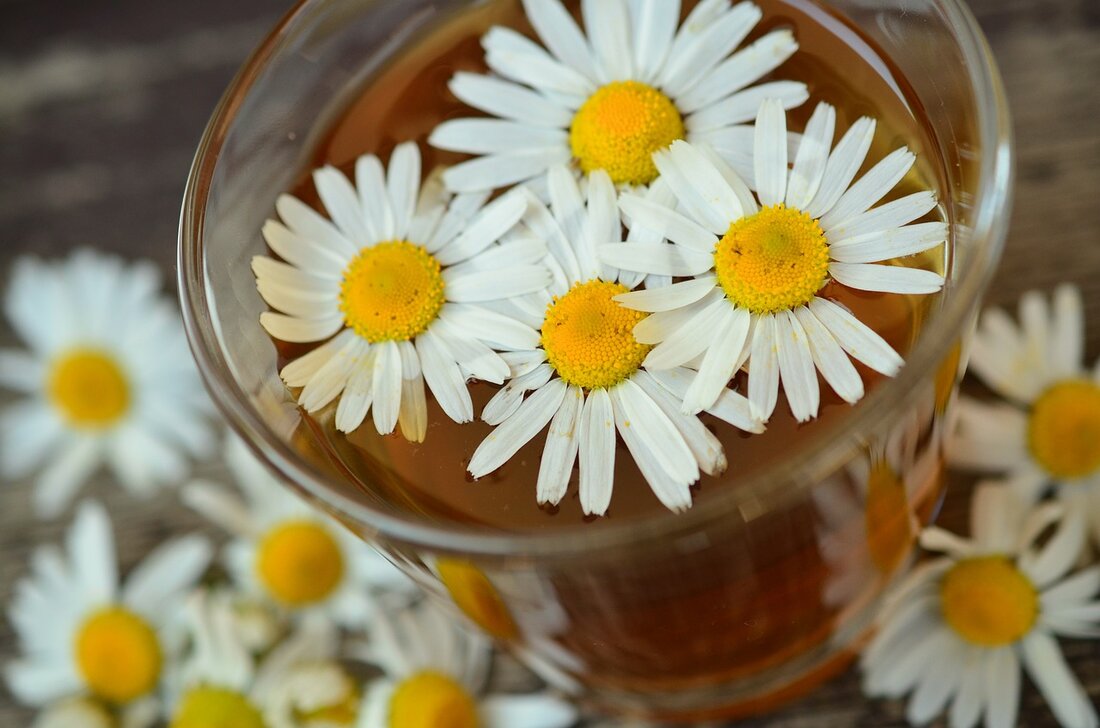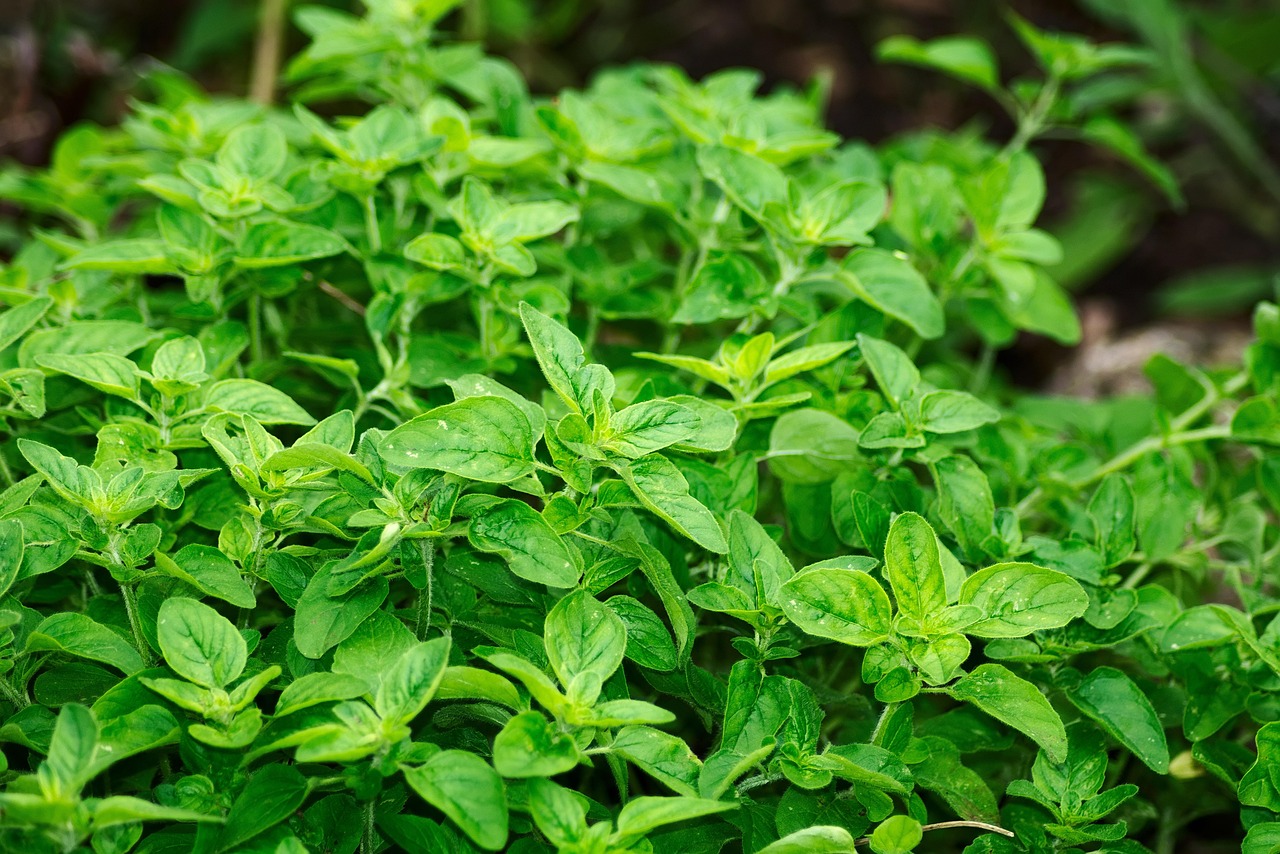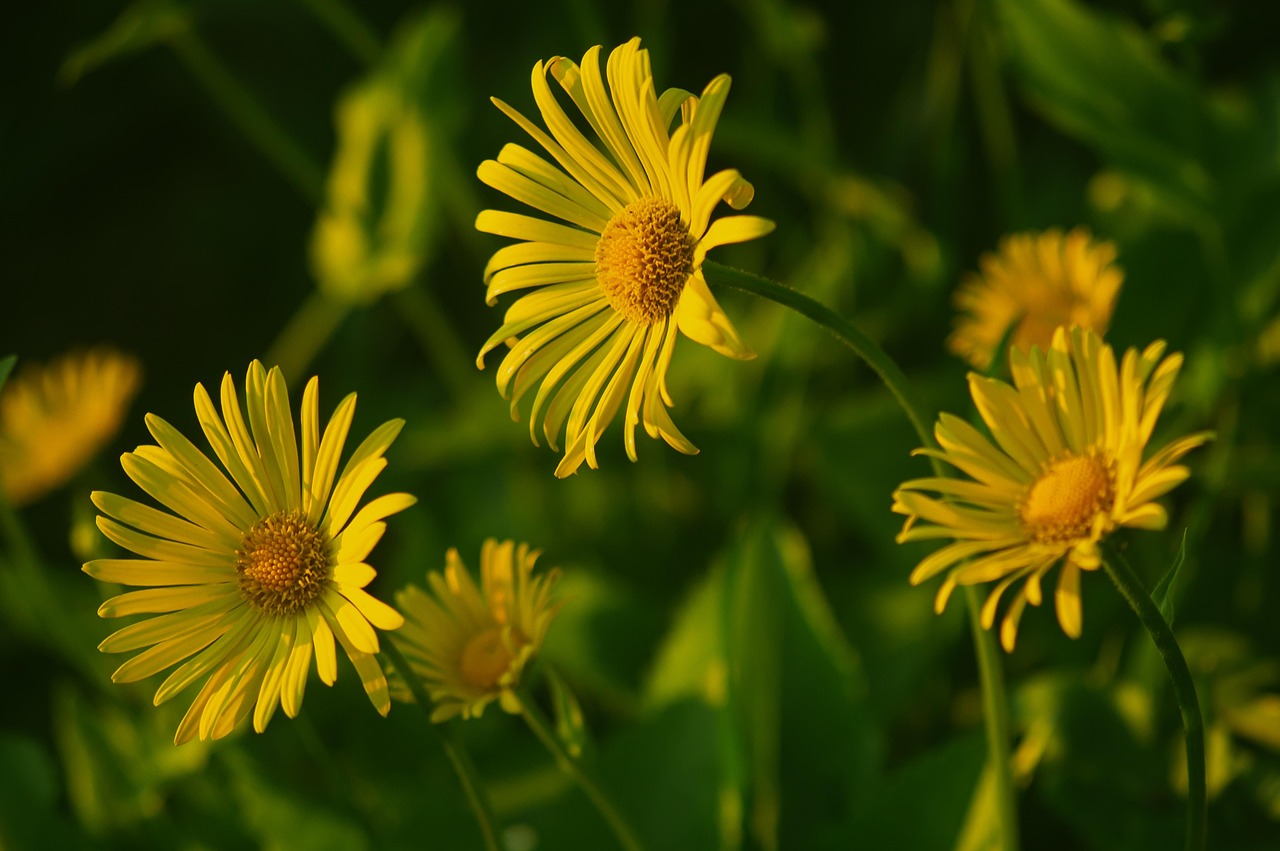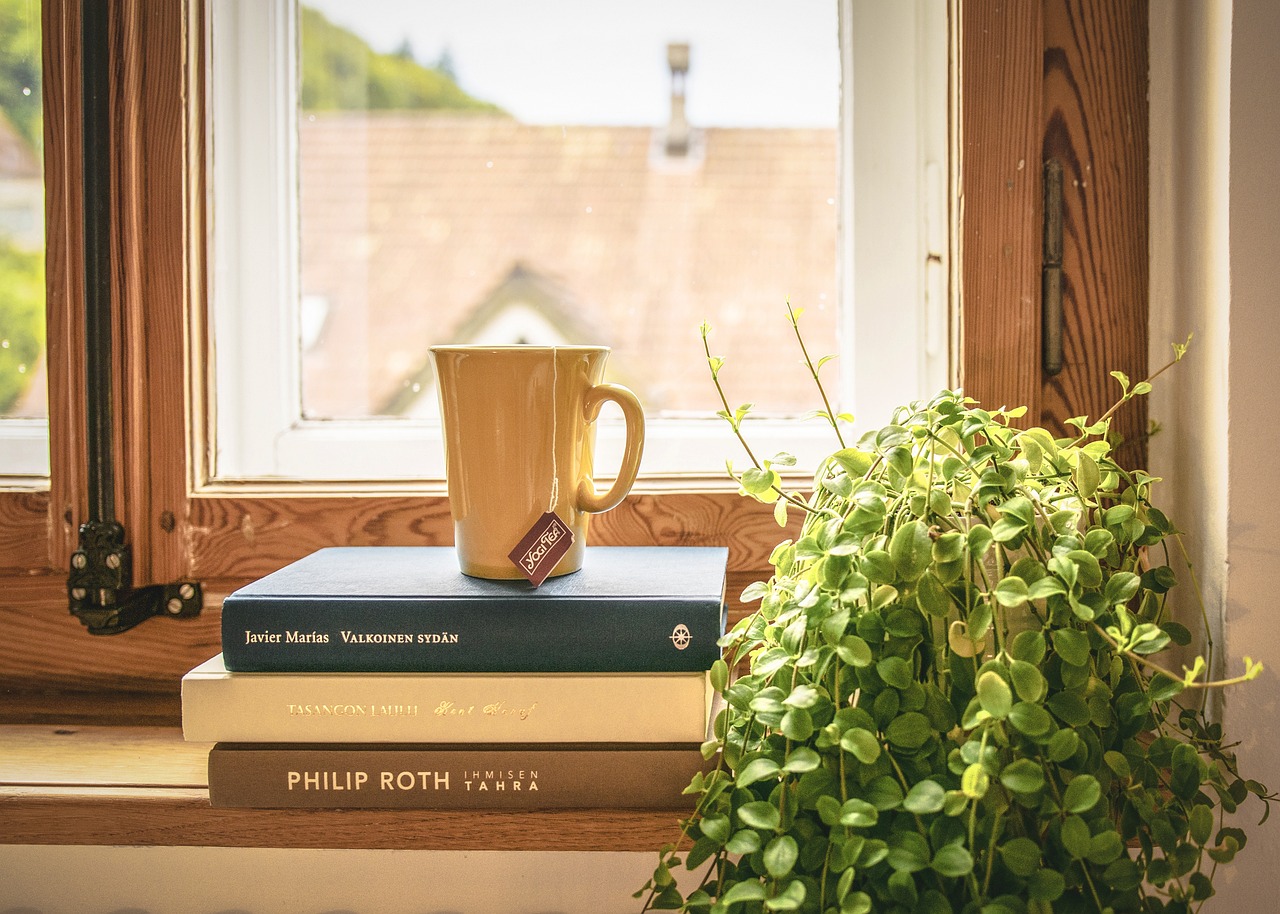Medicinal herbs from Germany: tradition, cultivation and new research results!
Discover the world of German medicinal herbs: your traditional application, cultivation tips and current research results for naturopathy.

Medicinal herbs from Germany: tradition, cultivation and new research results!
The world of German medicinal herbs is a treasure that is deeply rooted in the tradition and culture of our region. For centuries, people have been using the healing forces of nature to strengthen body and mind and alleviate symptoms in a gentle way. From the meadows and forests to the domestic gardens, domestic plants offer a wealth of opportunities to naturally support health. These herbs are not only an inheritance of our ancestors, but also a valuable part of modern naturopathy. Their effect is based on centuries -old knowledge, which is now supplemented by scientific knowledge. In this article we immerse yourself in the variety of German medicinal herbs, explore their applications and discover how they can accompany us in everyday life to promote well -being and balance.
Introduction to the world of medicinal herbs
German naturopathy is experiencing an impressive renaissance in our technology-driven world. In the midst of stress and hectic pace, society's need for natural and holistic healing methods that bring body and mind into harmony is growing. Medicinal herbs play a central role in this because they embody centuries-old knowledge that is deeply rooted in the traditions of our culture. Their importance ranges from prevention to the treatment of acute and chronic complaints, whereby they are often seen as a gentle alternative or supplement to conventional medicine. The growing demand for alternative treatment options with fewer side effects shows how relevant these natural remedies are today. This article, for example, offers a comprehensive insight into the use of naturopathy in everyday life nature.wiki, the simple methods for everyday use.
Historically, naturopathy has its roots in various traditional healing systems, including ancient Greek medicine, Ayurvedic medicine and traditional Chinese medicine. In Germany, a unique form of naturopathy has developed that relies heavily on the power of local medicinal herbs. Plants such as chamomile, valerian and yarrow were already used by our ancestors to relieve complaints such as digestive problems, insomnia or skin irritations. These traditional uses are now supplemented by modern scientific knowledge to ensure the effectiveness and safety of the herbs. Phytotherapy, i.e. medicine using herbal remedies, is a central part of naturopathy and includes the use of teas, tinctures or ointments. Further information about the various natural healing methods can be found in Health journal, which provides a detailed overview of classic and traditional methods.
The use of medicinal herbs in German naturopathy is diverse and ranges from the simple preparation of a herbal tea to more complex preparations. Chamber tea, for example, is traditionally used for gastrointestinal complaints or colds, while St. John's wort is often used to support mild depression or mood swings. These vegetable means aim to activate the body's self -healing powers and not only combat symptoms, but also to treat the causes of diseases. In addition to phytotherapy, naturopathy also includes other approaches such as nutritional therapy, movement therapy or hydrotherapy, which are often used in combination with medicinal herbs in order to achieve a holistic effect. For example, with rheumatic complaints, a combination of plant -based means such as willow bark and targeted movement therapy can provide relief.
An important aspect of naturopathy is its integration into everyday life to promote well-being and prevent illness. Simple measures such as regularly drinking herbal teas, using natural skin care products or aromatherapy can help to support the balance of the body and mind. But despite their naturalness, medicinal herbs are not free from risks. Herbal ingredients can cause side effects or interactions with other medications. Therefore, competent application is essential. Experts recommend seeking advice from a doctor or alternative practitioner before using natural remedies, especially if you have chronic illnesses or are taking prescription medications. The quality and purity of the products used as well as the correct dosage also play a crucial role in safety and effectiveness.
Modern naturopathy faces the challenge of finding a balance between traditional knowledge and scientific evidence. While many medicinal herbs have been proven effective through studies, there are still areas that require further research. The integration of natural healing methods into the established healthcare system offers both opportunities and challenges. Interdisciplinary collaboration between doctors and naturopaths as well as clear regulatory standards are necessary to ensure safe and effective use. In the long term, this could lead to more diverse, patient-centered healthcare, where naturopathy and conventional medicine work hand in hand. Medicinal herbs and other natural healing methods should always be viewed as a valuable supplement and not as a replacement for conventional medical treatments.
In summary, it can be said that German medicinal herbs make an indispensable contribution to natural medicine. They offer a gentle, often low-side effect way to promote health and relieve symptoms. However, their use requires knowledge, mindfulness and often professional advice to minimize risks and achieve maximum benefits. At a time when many people are looking for holistic approaches, medicinal herbs and naturopathy could bridge the gap between tradition and modernity and thus take on a valuable place in healthcare.
Traditional uses of German medicinal herbs

The use of medicinal herbs in German folk medicine goes back far into history and is an integral part of cultural tradition. Even in early advanced civilizations, plants were used for medicinal purposes, and this knowledge was passed on orally and later in writing over generations. In Germany, medieval medicine played a particularly important role, influenced by personalities such as Hildegard von Bingen, who documented extensive knowledge about the healing properties of plants. Medicinal herbs were not only a means of relieving ailments, but were also deeply embedded in people's everyday lives and spiritual practices. They were often associated with rituals and beliefs, which further emphasized their cultural significance. The site provides a historical overview of the use of traditional herbal medicines Wikipedia, which highlights the long-standing medical use in Europe.
One of the best-known medicinal herbs in German folk medicine is chamomile (Matricaria recutita), which has been valued for centuries for its pain-relieving and anti-inflammatory effects. It was traditionally used as a tea for gastrointestinal complaints, colds or skin irritations. In many households, chamomile was an indispensable home remedy that was used both internally and externally, for example in the form of compresses or baths. Their flowers, which thrive in sunny, nutrient-rich locations, also symbolized purity and healing in folk medicine. The cultural significance is evident in ancient proverbs and customs, where chamomile was often considered a protective plant against disease. Further details about local wild herbs such as chamomile can be found here Plantura, where their versatile uses are described.
Another important herb is the nettle (Urtica Dioica), which despite its unpopular burning hair has a long tradition in folk medicine. Already in the Middle Ages it was used as a blood -cleaning and diuretic agent, often in the form of teas or juices. The nettle was considered a symbol of resistance and was used in folk medicine even in rheumatic complaints or hair loss. Culturally, it was also associated with fertility rituals because it was attributed to a stronger effect on the body. Their versatility is also evident in the kitchen, where it was used as a nutritious ingredient in soups or smoothies, which underlines her role as an everyday plant. The nettle was therefore not only a remedy, but also an expression of the connection between man and nature.
Valerian (Valeriana officinalis), although not described in detail in the sources mentioned, also deserves mention due to its historical relevance. It has been used as a sedative in Europe since ancient times, and in German folk medicine it was the drug of choice for insomnia and nervousness. Valerian root was dried and given as a tea or tincture, often accompanied by the belief that the plant could also drive away evil spirits. This mystical component reflects the close connection between medicine and superstition, which was influential in earlier times. Valerian was cultivated or wild-collected in many regions of Germany, illustrating its availability and popularity in folk medicine.
The dandelion (Taraxacum Officinale), which is often dismissed as weeds, is just as deep in German culture, but has a long history as a medicinal plant. In folk medicine, it was used to support the liver and kidney function because he was attributed to a detoxifying effect. His leaves and roots were processed into teas or salads, and in some regions the dandelion was considered a symbol of endurance and renewal - to match its ability to grow almost anywhere. Culturally, it was also anchored in children's customs, for example if you blew the dandelion in the wind, which underlines his presence in everyday life.
The historical use of medicinal herbs such as St. John's wort (Hypericum perforatum) also demonstrates their cultural importance. St. John's wort was used in folk medicine primarily for mild depression and wounds, but was also considered a protective plant against evil forces, especially around the summer solstice, which is associated with the name of the plant. It was often hung in wreaths or bundles to protect the home and yard. This combination of healing power and spiritual meaning made St. John's wort an indispensable part of rural culture and medicine.
In summary, it can be said that medicinal herbs in German folk medicine were far more than just remedies. They were an expression of a deep understanding of nature and their strength, embedded in customs, rituals and the everyday life of people. Their cultural importance is evident in the way they were valued and passed on for generations, often combined with stories and beliefs. Even if modern medicine has questioned or complemented many of these traditions, respect for the healing power of nature in German culture remains alive.
Important German medicinal herbs in portrait

German medicinal herbs such as chamomile, St. John's wort and yarrow have been known for their healing properties for centuries and play a central role in naturopathy. These plants that thrive in meadows, forests and gardens contain valuable active ingredients that can provide relief in the event of a variety of symptoms. Their application ranges from traditional home remedies to modern phytotherapeutic preparations. In the following, these three herbs are presented in detail, with a focus on their active ingredients and areas of application. The side offers a comprehensive insight into the healing power of chamomile and yarrow Camillan that describes its effect and combination.
The real chamomile (Matricaria Chamomilla) is probably one of the most famous medicinal herbs in Germany and has been used for thousands of years. It belongs to the Korbblütler family and can easily be recognized by its intense, characteristic fragrance and her concave, hollow flower head. Chamomile contains a variety of active ingredients, including essential oils, flavonoids, cumarines and bitter substances. Particularly noteworthy should be emphasized and alpha-bisabolol, which are responsible for their anti-inflammatory, pain-relieving and antibacterial effect. In naturopathy, chamomile is often used for stomach and intestinal complaints, for example for flatulence, cramps or diarrhea. It can be used both internally as tea and externally in the form of envelopes or bathrooms to treat skin irritation, wounds or inflammation in the mouth and throat space. It also makes it calming effect a popular means of colds and sleep disorders.
St. John's wort (Hypericum perforatum) is another important medicinal herb that has a long tradition in German folk medicine. This plant, which often grows on forest edges or on meadows, is particularly known for its mood -enhancing effect. The most important active ingredients of St. John's wort are hypericin and hyperforin, which have an antidepressant and anxious effect. It is used especially in light to moderate depression, mood swings and nervous unrest, often in the form of teas, capsules or tinctures. Applied externally, for example as oil, St. John's wort supports wound healing and can help with burns, bruises or muscle tension. An important note, however, is that St. John's wort can increase the sensitivity to light of the skin and can cause interactions with certain drugs such as antidepressants or pill. Therefore, his application should always be discussed with a doctor or pharmacist.
The yarrow (Achillea Millefolium), also from the Korbblütler family, is a traditional pharmaceutical plant, the name of which goes back to the Greek hero Achilles, which she used to provide wound care. It contains essential oils, flavonoids, salicylic acid, cumarine, the bitter fabric Achillin and tannins, which give it an antispasmodic, anti -inflammatory and bloodstilling effect. In naturopathy, yarrow is often used in gynecology, for example to relieve menstrual complaints or in the case of abdominal cramps. It also supports digestion and can help with loss of appetite or slight stomach complaints. Applied on the outside, it promotes the healing of small wounds and skin irritation. The yarrow is often used as a tea, tincture or in combination products, whereby their effect is increased particularly in connection with other herbs such as chamomile.
The combination of chamomile and yarrow is particularly valued in naturopathy, as their effects complement themselves. Together they have anti-inflammatory, antibacterial and wound healing promotes, which makes them an effective means of skin problems, gastrointestinal complaints or inflammation in the mouth and throat space. Such combinations can be found, for example, in finished medicinal products such as Kamillan®, which are used for rinsing, envelopes or sitting pools. These applications are helpful for gingivitis, hemorrhoids or vaginal infections. The page offers further information on practical applications of these medicinal herbs The PTA, which provides detailed information on preparation and indications.
However, the use of these medicinal herbs requires care and knowledge. While chamomile and yarrow are usually well tolerated, allergic reactions can occur, especially for people with a hypersensitivity to the basket. St. John's wort also carries the risk of interactions with other medication, which is why expert advice is essential. The correct dosage and quality of the preparations also play an important role in developing the full effect of the active ingredients and avoiding side effects. Ideally, medicinal herbs should come from organic cultivation or trustworthy sources to prevent contamination.
In summary, chamomile, St. John's wort and yarrow offer a wide range of applications in naturopathy. Your active ingredients make you valuable helpers in physical and psychological complaints, from inflammation to digestive problems to mood swings. They embody the power of nature and show how traditional knowledge and modern applications can go hand in hand to gently promote well -being.
Growing and harvesting medicinal herbs

Growing medicinal herbs in your home garden is not only an enriching experience, but also a way to harness the healing powers of nature right on your doorstep. Many German medicinal plants are easy to care for, attractive and also provide food for insects. Whether in beds or pots – with the right tips on location, care and harvest time, even beginners can successfully cultivate medicinal herbs such as chamomile, lemon balm or thyme. This section gives practical advice on how to transform your own garden into nature's little pharmacy. The site offers a comprehensive overview of the cultivation of medicinal plants NDR guides, which provides detailed information on various herbs and their needs.
The first step in growing medicinal herbs is choosing the right location, as many plants have specific light, soil and moisture requirements. Mediterranean herbs such as thyme, rosemary, sage and lavender, which are rich in essential oils, require a sunny, sheltered spot with nutrient-poor, slightly calcareous and well-drained soil. These plants are robust in summer but sensitive to frost in winter, which is why protection with fleece or overwintering in a frost-free room is advisable. In contrast, herbs such as mint prefer partially shaded locations with moist, nutrient-rich soil. Mint is great to grow in containers to control its spread in the garden. Perennials such as lemon balm or fennel are frost-resistant and are suitable for permanent beds, while annual plants such as chamomile have to be re-sown every year.
Maintaining medicinal herbs is usually uncomplicated, but requires attention to achieve optimal results. Regular watering is particularly important for container plants, although waterlogging should be avoided - a good water drain in the pot or bed is essential. Mediterranean herbs such as thyme or yysop, which can promote digestion and help against coughing, get out with less water, but need a permeable soil to prevent root rot. Perennials such as nettle or lemon balm benefit from occasional pruning to stimulate growth and keep the plant healthy. Fertilization should take place sparingly, since many medicinal herbs thrive better in low -nutrient soil and thus develop their active ingredients more concentrated. Wild herbs such as dandelions or giers, which also have healing properties, often grow by themselves and hardly need care, but can be controlled by root barriers to prevent uncontrolled spread.
The correct harvest time is crucial in order to benefit from the maximum effect of the medicinal herbs. Many plants should be harvested before or during flowering, as this is when the concentration of active ingredients is highest. Real chamomile, for example, which has an anti-inflammatory effect and is used as a tea or topically, should be harvested between May and June before the flowers have fully bloomed. Lemon balm, known for its relaxing properties, is ideally harvested before flowering to obtain the best aromas and active ingredients. For Mediterranean herbs such as thyme or sage, the leaves can be harvested throughout the growing season, with cutting in the morning after the dew has dried to increase quality. Marigolds, which are used topically for skin problems, are fast-growing and undemanding - their flowers should be picked regularly to stimulate the formation of new flowers.
When growing and harvesting, it is important to treat the plants gently so as not to affect their healing properties. Use clean, sharp scissors or knives to cut off the plant parts, and avoid harvesting too much at once so that the plant can regenerate. After the harvest, the herbs should be dried in an airy, shady place to prevent mold formation. Alternatively, they can be used fresh or frozen to preserve their active ingredients. Especially with sensitive plants such as chamomile, it should be ensured that only the real specimens with hollow flower heads and intensive fragrance have to be collected, since other chamomile varieties have no healing effect.
For garden beginners or people with limited space, pots or raised beds are ideal for cultivating medicinal herbs. Plants such as coneflower (Echinacea), which strengthens the immune system, can also cope with drier locations and are ideal for smaller gardens. If you would like to find out more tips on self-care, you can find them on the site My harvest Useful information and even free bed plans that make it easier to get started. With a little planning and care, your own garden can become a source of health and well -being.
In summary, it can be said that growing medicinal herbs in your home garden is a worthwhile and sustainable way to integrate natural medicine directly into everyday life. With the right choice of location, minimal care and knowledge of the optimal harvest time, herbs such as chamomile, thyme or lemon balm can be cultivated successfully. Not only do you have fresh remedies at hand, but you also contribute to biodiversity and the protection of insects.
Preparation and application

The production of teas, tinctures and ointments from German medicinal herbs is a wonderful way to integrate the healing forces of nature directly into everyday life. These traditional preparations have been proven in naturopathy for centuries and can also be implemented at home with a little patience and care. Whether to relieve symptoms or to promote well -being - the correct production and application are crucial in order to develop the full effect of the herbs. In this section you will find practical instructions for preparation and tips for use. The page offers a helpful overview of the basics of tinctures Wikipedia, which goes into detail about the extraction and preservation of herbal active ingredients.
Let's start with the production of herbal teas, one of the simplest and most popular applications in naturopathy. For a tea made of chamomile that helps with gastrointestinal complaints or colds, you need a teaspoon of dried chamomile flowers per cup (approx. 200 ml). Pour the flowers with boiling water and let the tea pull for 5 to 10 minutes before you strain it. With lemon balm that has a soothing effect, you can use fresh or dried leaves - about two teaspoons per cup. The tea should also pull for 5 to 10 minutes to release the essential oils. Drink the tea in small swallows, ideally unsweetened, so as not to affect the effect. Teas made of nettle that have a diuretic and blood purifying effect can be consumed twice a day if necessary, but should not be taken over a longer period of time without medical advice. Make sure to store the herbs in a cool, dry place to get their quality.
Tinctures are another effective way to preserve and utilize the active ingredients of medicinal herbs. They consist of an alcoholic extract that dissolves the healing ingredients of the plants and preserves them. For a St. John's wort tincture to help with mild depression or wounds, you need fresh or dried flowers and a high-proof alcohol (e.g. vodka with at least 40% alcohol content). Fill a clean glass jar about two-thirds full with the flowers and pour the alcohol over it until the plant parts are completely covered. Seal the jar and let it steep in a cool, dark place for 4 to 6 weeks, shaking gently daily. After this time, strain the liquid through a fine sieve or cloth and pour the tincture into a dark glass bottle. To use, 10 to 20 drops are usually taken diluted in a little water, but only after consulting an expert, as tinctures are concentrated and can cause interactions.
The production of ointments is ideal for using medicinal herbs externally, for example for skin irritations or small wounds. A marigold ointment that promotes wound healing can be easily made at home. Collect fresh marigold flowers (approx. 50 g) and allow them to dry slightly to reduce moisture. Heat about 200 ml of high-quality vegetable oil (e.g. olive or almond oil) in a saucepan over low heat and add the flowers. Let the mixture simmer over a gentle heat for 2 to 3 hours without letting the oil boil. Then strain the flowers and mix the still warm oil with about 20 g of beeswax until it dissolves completely. Pour the finished ointment into clean, small jars and let them cool. This ointment can be applied thinly to skin irritations, small cuts or dry skin. It will last for several months if stored in a cool place.
Caution is advised when using these preparations in naturopathy, as the effect may vary depending on the person and dosage. Teas are usually gentle and are suitable for daily use, for example for minor complaints such as digestive problems (chamomile) or stress (lemon balm). Tinctures, on the other hand, are more concentrated and should be dosed sparingly - they are suitable for targeted applications, such as supporting mood swings (St. John's Wort) or insomnia (valerian). Ointments are ideal for local treatments, for example for inflammation or wounds (calendula, yarrow). It is important to pay attention to possible allergies or interactions with medications and, if in doubt, to consult a doctor or alternative practitioner. In addition, the herbs used should come from organic farming or trustworthy sources to avoid contamination.
The production and use of teas, tinctures and ointments requires care, but also creativity. Experiment with various herbs and combinations to find the appropriate means for you. Be sure to always use clean utensils and store the preparations correctly - teas dry and light -protected, tinctures in dark bottles and ointments cool. In this way you can optimally use the healing properties of German medicinal herbs and at the same time connect to nature. Please note that the second source Hot Topic It is not relevant to this section because it deals with graphic teas but was listed as a reference.
In summary, home-made herbal preparations offer a natural and sustainable way to relieve symptoms and promote well-being. With the right techniques and a little patience, you can create teas, tinctures, and ointments that are not only effective but also tailored to your needs. Naturopathy thrives on this knowledge and mindfulness in dealing with nature's treasures.
Current research and trends

Research on medicinal herbs in Germany has become significantly more important in recent years because interest in natural alternatives to synthetic drugs is growing steadily. Scientific studies play a central role in confirming the health -promoting properties of these plants, which have been used in traditional medicine for centuries. From the analysis of chemical active ingredients to clinical tests on patients - medicinal herb research combines old knowledge with modern science in order to ensure their effectiveness and security. This section provides an overview of current developments and challenges in this area. The site offers a well -founded insight into scientific studies on the effectiveness of medicinal herbs Healthy and relaxed, which highlights the importance of such research.
One focus of current research is on the identification and analysis of the active active ingredients in medicinal herbs. Flavonoids, alkaloids and essential oils are of particular interest. Flavonoids that occur in plants such as chamomile or yarrow have antioxidant properties that can prevent cell damage. Essential oils, such as thyme or sage, are known for their anti -inflammatory and antimicrobial effects. Alkaloids, on the other hand,, as contained in some medicinal plants, can have strong pharmacological effects. Studies that often begin in laboratories examine the chemical composition of these plants to understand the exact mechanisms of their effect. Clinical tests then test how these active ingredients have an impact in patients, for example in the relief of symptoms such as inflammation or mental stress.
Successful studies have already proven the effectiveness of some medicinal herbs. St. John's wort, for example, has been proven in numerous studies to be effective for mild to moderate depression, with the active ingredient hypericin playing a key role. Chamomile, traditionally used for gastrointestinal complaints, has also been confirmed in studies for its anti-inflammatory properties. In addition, research on cistus, whose demand has increased since the coronavirus pandemic, has shown that it can have a supportive effect on colds and inflammation. Such findings are helping to establish medicinal herbs as a complementary therapy in modern medicine. An interesting article on this topic can be found at Deutschlandfunk, which illuminates the growing importance of medicinal plants such as cistern rose.
New developments in medicinal herb research are increasingly focusing on the combination of vegetable means with conventional therapies in order to increase treatment effectiveness. Researchers examine how medicinal herbs support the effects of medication or their side effects can alleviate. At the same time, interactions between vegetable preparations and synthetic drugs are analyzed because they can represent a potential risk. An example is St. John's wort that can influence the effect of certain medications such as antidepressants or pill. Such studies are essential to develop clear guidelines for secure use and to inform patients comprehensively.
Despite advances, medicinal herbal research faces several challenges. One of the biggest hurdles is the standardization of plant extracts, as the concentration of the active ingredients can vary greatly depending on the growing region, harvest time and processing. This makes the reproducibility of study results and the development of uniform preparations difficult. In addition, financial support for research is often limited because, unlike synthetic drugs, medicinal herbs are not patentable and therefore offer less economic incentive for investment. Regulatory hurdles pose a further difficulty as extensive evidence is required for the approval of herbal products as medicinal products. These requirements are necessary to ensure safety, but sometimes slow down the introduction of new products onto the market.
Another promising research area is the investigation of less well -known medicinal plants that are native to Germany. Plants such as wide and pointed paths, which are traditionally used in insect bites or skin irritation, are increasingly becoming the focus of scientific analyzes. Studies show that they can inhibit histamine release, which explains their anti -inflammatory effect. Dandelion, which supports digestion and kidney function, is also examined with regard to its potential applications in chronic diseases. This work helps to expand the spectrum of usable medicinal herbs and to develop new therapeutic approaches.
In summary, it can be said that medicinal herb research in Germany is at the interface of tradition and modern science. While successful studies confirm the effectiveness of many plants, challenges such as standardization and financing remain. The integration of medicinal herbs into conventional medicine requires ongoing examinations and close cooperation between researchers, doctors and regulatory authorities. For those interested, it is important to find out more about current results and to pay attention to high -quality products in order to use the advantages of medicinal herbs safely and effectively. The future of research promises exciting developments that have the potential to further establish naturopathy and promote sustainable treatment options.
Sources
- https://natur.wiki/posts/natuerliche-medizin/naturheilkunde-im-alltag-einfache-anwendungen-mit-grosser-wirkung
- https://www.gesundheitsjournal.de/3314/was-sind-naturheilverfahren
- https://www.plantura.garden/gruenes-leben/pflanzen-uebersichten/heimische-wildkraeuter
- https://de.wikipedia.org/wiki/Traditionelles_pflanzliches_Arzneimittel
- https://www.kamillan.de/die-kraft-der-heilkraeuter-schafgarbe-und-kamille-2
- https://www.diepta.de/news/wirksame-hilfe-aus-der-natur
- https://www.ndr.de/ratgeber/garten/nutzpflanzen/Heilpflanzen-und-Heilkraeuter-im-Garten-anbauen,heilkraeuter110.html
- https://www.meine-ernte.de/pflanzen-a-z/kraeuter/heilkraeuter/
- https://www.hottopic.com/tees/
- https://en.m.wikipedia.org/wiki/Tincture
- https://gesund-und-erholt.de/wissenschaftliche-studien-zur-wirksamkeit-von-heilkraeutern/
- https://www.deutschlandfunk.de/heilpflanzen-heilkraeuter-medizin-wirkung-100.html

 Suche
Suche
 Mein Konto
Mein Konto